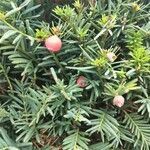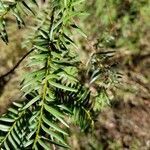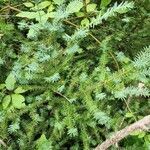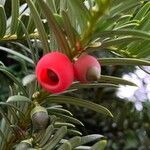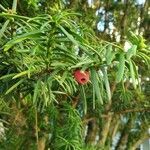A small tree or shrub. It can grow to 20 m high. The crown is cone shaped. The young bark is smooth. The mature bark is fluted. The branches are irregular and spread. They are flat or slightly drooping. The needles are single and 13-25 mm long. They are dark yellowish-green above and pale below. The buds scales are keeled and loose. The seed has a fleshy aril or seed layer around it. This is red.
